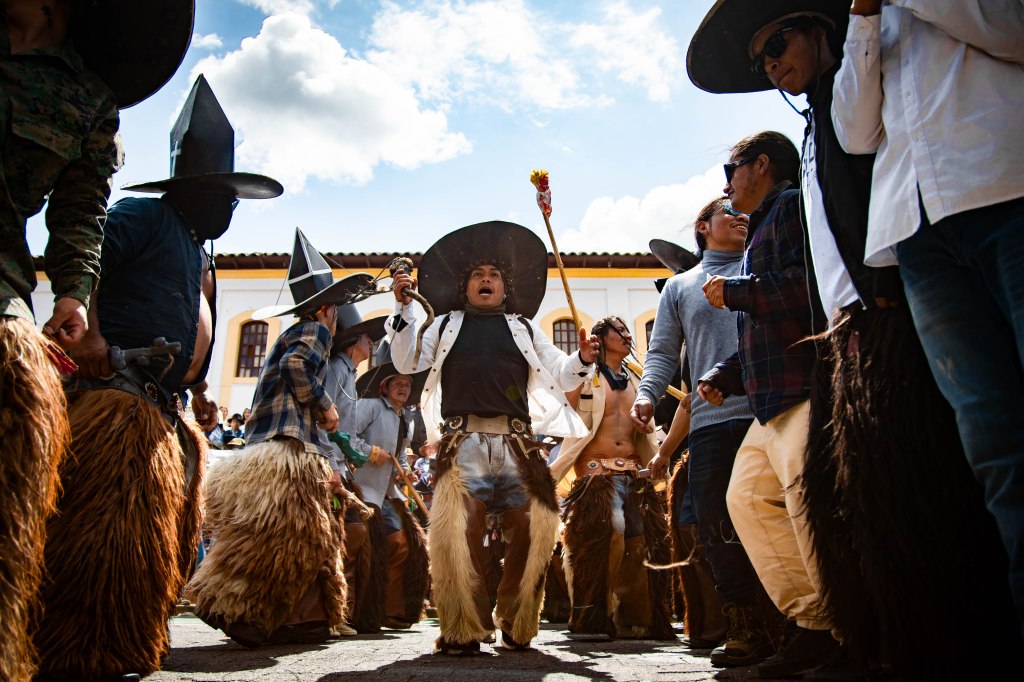
Every June/July, the rural Ecuadorian town of Cotacachi (population 9000) comes alive with a unique celebration of the ancient Incan celebration “Inti Raymi.” Inti is the name of the Incan sun god and “raymi” simply means “festival” in the indigenous Andean language, Kichwa.
In general, Inti Raymi was the most important festival in the Incan Empire and was celebrated annually around the winter solstice – June in the southern hemisphere capital of the Incan Empire, Cusco (in modern-day Peru). Cotacachi is technically in the northern hemisphere, but Inti Raymi is still celebrated in the June/July timeframe. However, with Cotacachi being only 60 miles (100 kilometers) north of the equator, the northern/southern hemisphere distinctions are mere semantics.
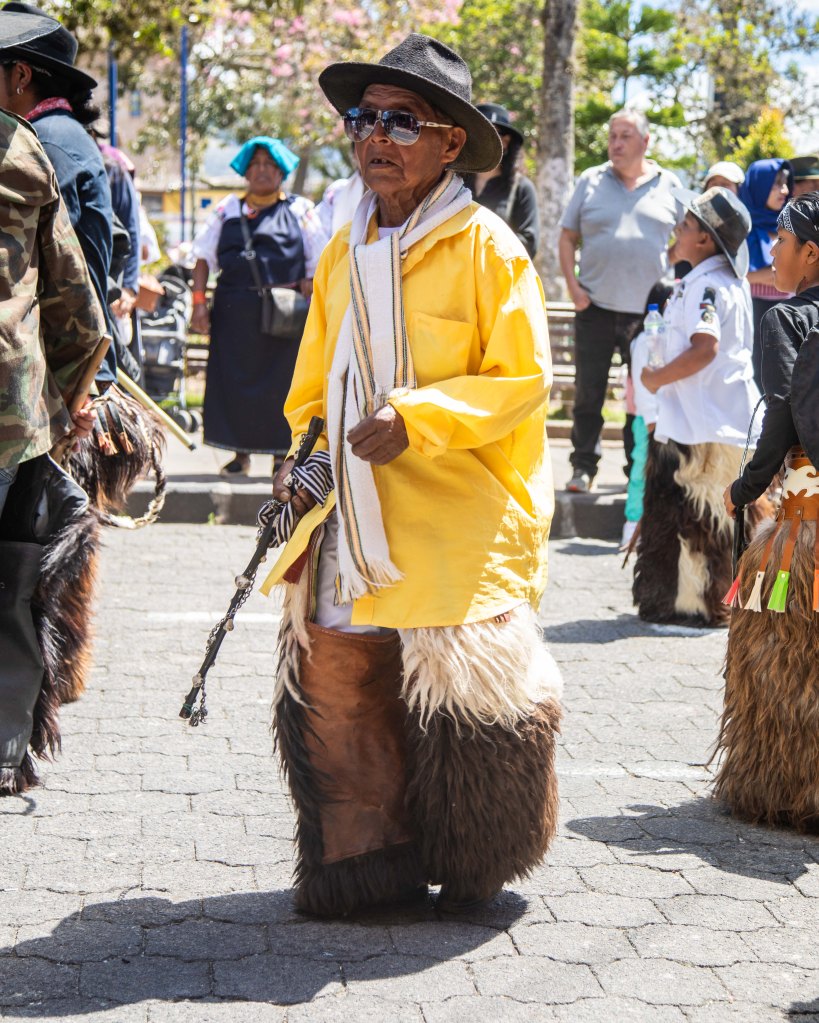
Inti Raymi was the central celebration of the Incan calendar, and while the largest of all celebrations happened in Cusco, smaller local celebrations happened throughout the empire. With the arrival of the Spanish and the fall of the Incan Empire, the last recorded Inti Raymi in Cusco occurred in 1535 (1). After this date, the Catholic Spaniard colonialists did their best to replace the festivities with a Catholic-centric holiday for St. Peter.
In Ecuador, the modern celebration of Inti Raymi still goes by the same name but takes an agriculturist twist. You’re more likely to hear the term “Pachamama” (“mother earth” in Kichwa) than any musings on Inti. With this agricultural twist, Inti Raymi is more of a celebration of the corn harvest, which coincides with the solstice. It’s theorized that the corn harvest season was celebrated long before the Incas ever came to northern Ecuador and introduced Kichwa and the word “inti” (2). As such, the native corn harvest celebration continued just under the new Incan name, Inti Raymi.
The Ecuadorian celebrations, often begin with several days of purification rituals performed by leaders of indigenous communities to realign themselves with the earth and natural order.
The purification rituals are followed by several days of celebration through music and dancing. These following celebrations generally fall into three categories:
- Wawa Puncha – the children’s day
- Hatun Puncha – the great day
- Warmi Puncha – the women’s day
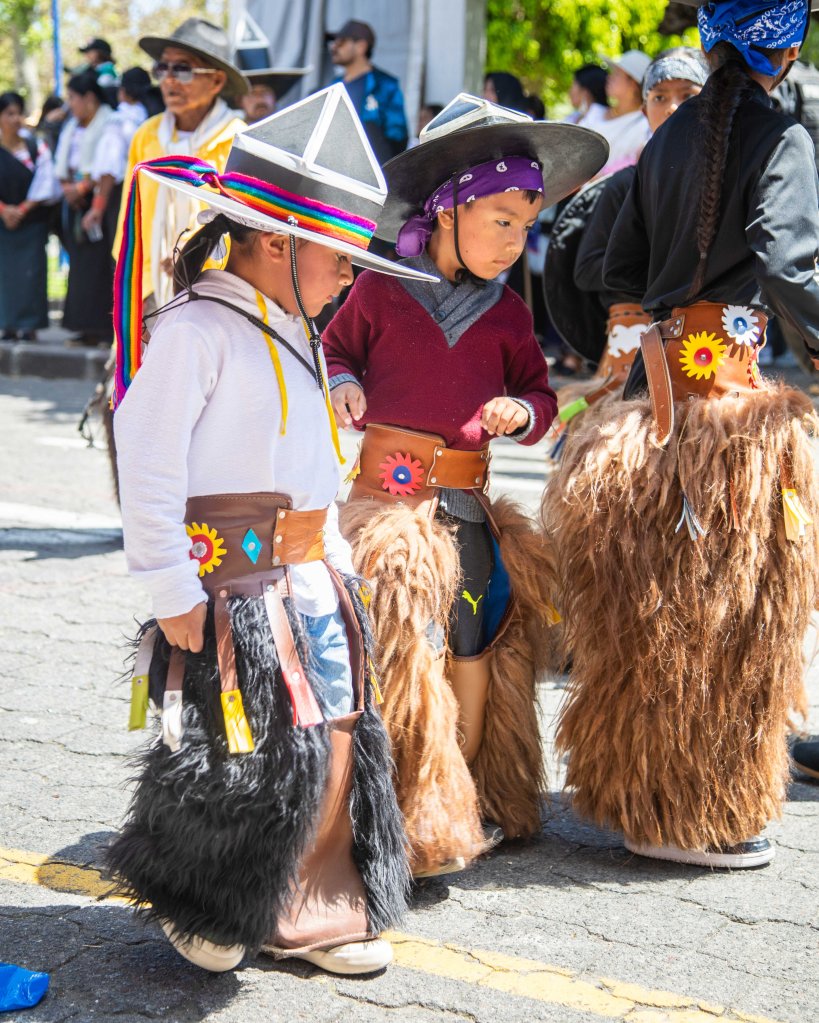
The Wawa Puncha starts off the celebration portion of Inti Raymi with the children dressing up in traditional, playing music, and dancing. It is a time to pass on the traditions of old to the next generation, instilling pride in their long Indigenous heritage.
The Hatun Puncha is the main event, and while it literally means “the great day,” it is the men’s time to celebrate. The music is the loudest. The dancing is the hardest. And the crowd is the rowdiest. It’s often said that the Hatun Puncha is supposed to symbolize man’s battle with the earth (3) which can be interpreted to represent the agricultural acts of plowing and harvesting – taking blade to the soil.
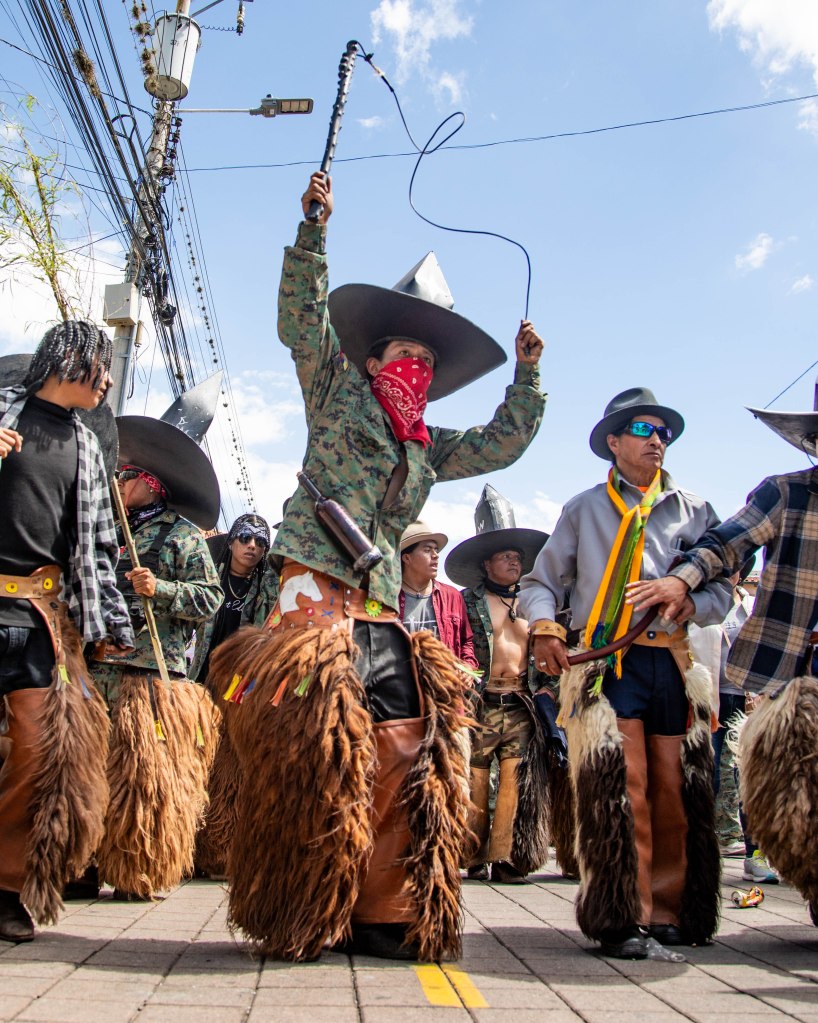
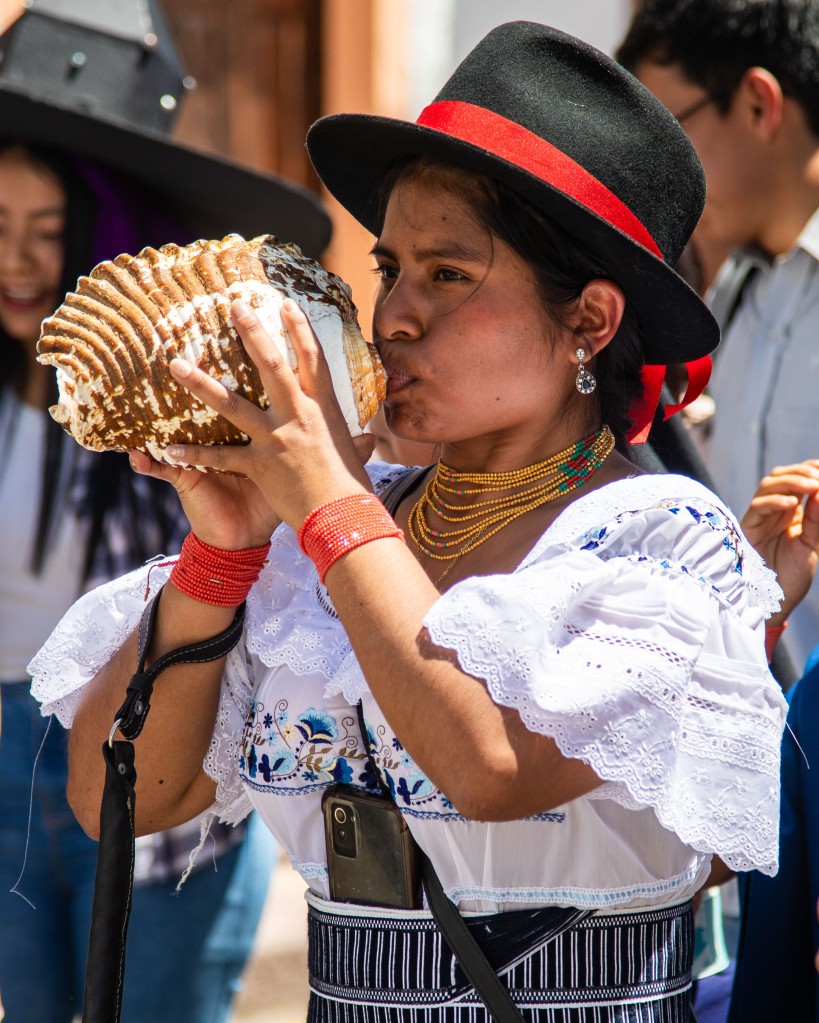
The Warmi Puncha finishes off the celebrations and is when the women take to the streets. Compared to the men’s celebration, the women tend to be much more organized, orderly, and intentional. It’s said that the woman’s gentle presence in the Warmi Puncha is supposed to calm the earth after the man’s battle. To calm the soil, and let it rest as another cycle of planting, growing, and harvesting approaches.
Whether an original component or an addition of the Incas, there seems to be an ingrained warlike aspect to Inti Raymi, more than just the representation of man’s battle with the earth. Indigenous communities will often perform their purifications in their communities but then gather together in a central town for a communal celebration. This communal celebration traditionally included each community sending their best warriors to participate in ritual fighting that regularly ended in injury (4). It was believed that spilled blood was needed to bless the fields (3)(4).
Ecuadorian historian Juan Flores notes this violent nature mentioning that the dances in the Hatun Puncha often occur with weapons such as sticks, whips, and chains in hand. But he writes that these violent dances are “dances in which courage, bravery, and strength are demonstrated against the adversary, which is represented by the neighboring communities or from the other end of the city.” (emphasis added)
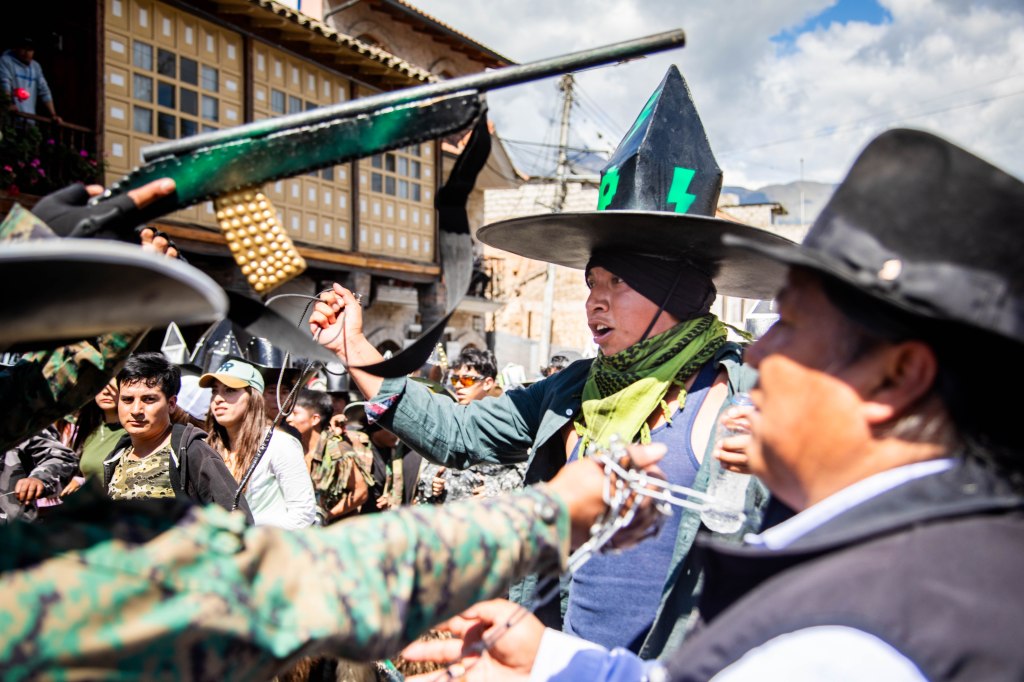
Note that Flores does not say the neighboring communities are the adversary, the adversary is merely represented by neighboring communities.
Flores then continues on to note how colonialists exploited these representations for their own gains. He writes, “These battles were incited … so that the slaves and servants could vent their violence against false enemies and not against their true adversaries who were the ones who exploited them.” (2)
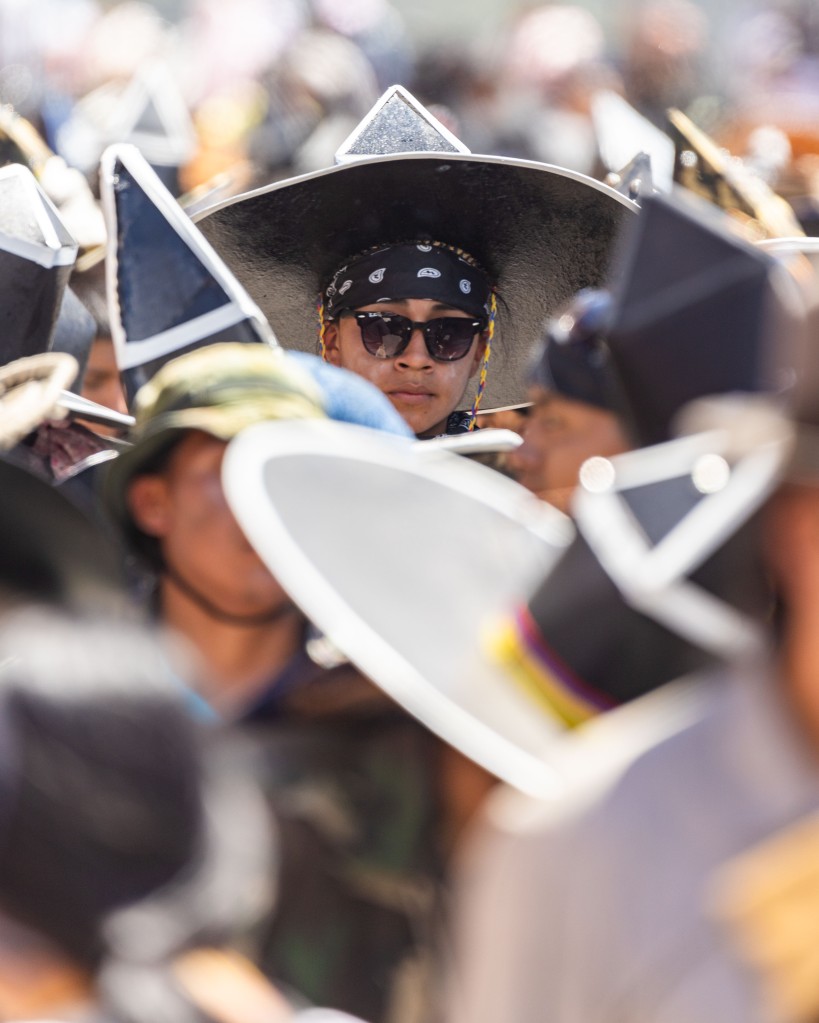
In Ecuador’s post-colonial era, there has been a slow and steady build to the Indigenous movement. After centuries of being marginalized, minimized, and even banned from existing in certain spaces, observing traditional celebrations, such as Inti Raymi, has in itself become an act of defiance. It’s a symbol of the continual presence and pride of the indigenous population despite all the persecution. It is a statement of perseverance, “Kaypimi kanchik” meaning “we are still here” (2)(3).
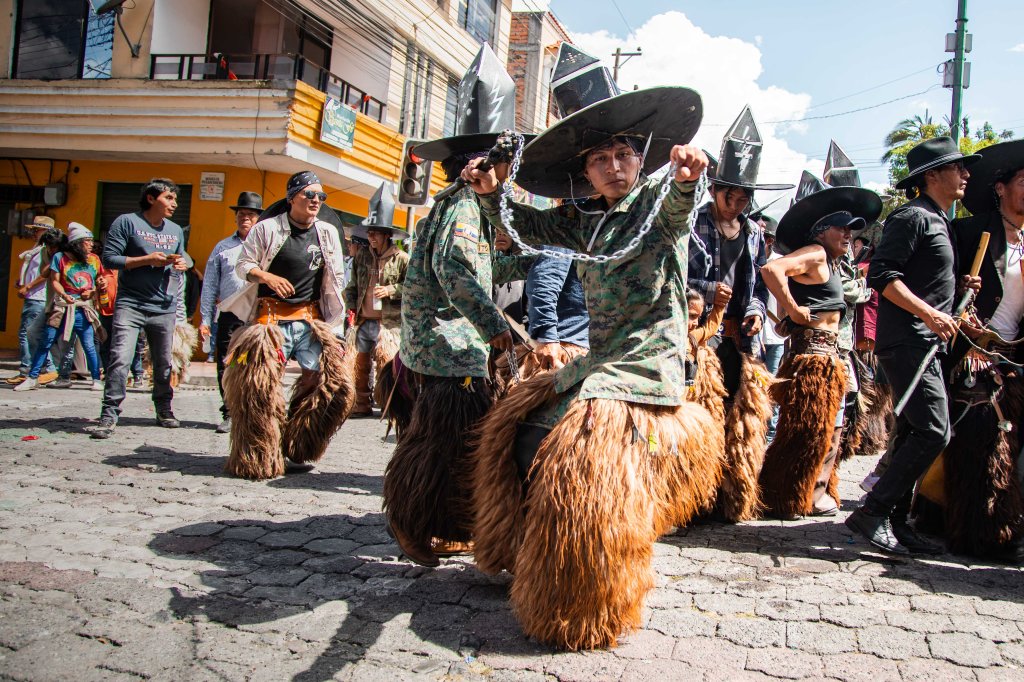
This defiant nature is on full display throughout the Inti Raymi celebration in Cotacachi. Here the Hatun Puncha is more commonly referred to as “Toma de la Plaza” or “Taking of the Plaza.” In the colonial era, the town was almost exclusively for the colonialists and wealthy landowners, while the indigenous population was relegated to rural and remote villages. Taking over the central plaza symbolizes the indigenous communities taking back the spaces that were originally theirs, but they had been excluded from for centuries.
In Toma de la Plaza, indigenous communities from all around Cotacachi gather in the town, with each community assigned a time in which they can take over the plaza. At their assigned time, the community will march into town from their gathering spot and enter the plaza. They march with their takiks (musicians) at the front of the procession. The takiks generally play an eclectic mixture of instruments such as, but not limited to, reed flutes, harmonicas, and even conch shells. The takiks lead the procession followed by tushuks (dancers) who are generally dressed in zamarros or hairy chaps made from either goat or llama skin.
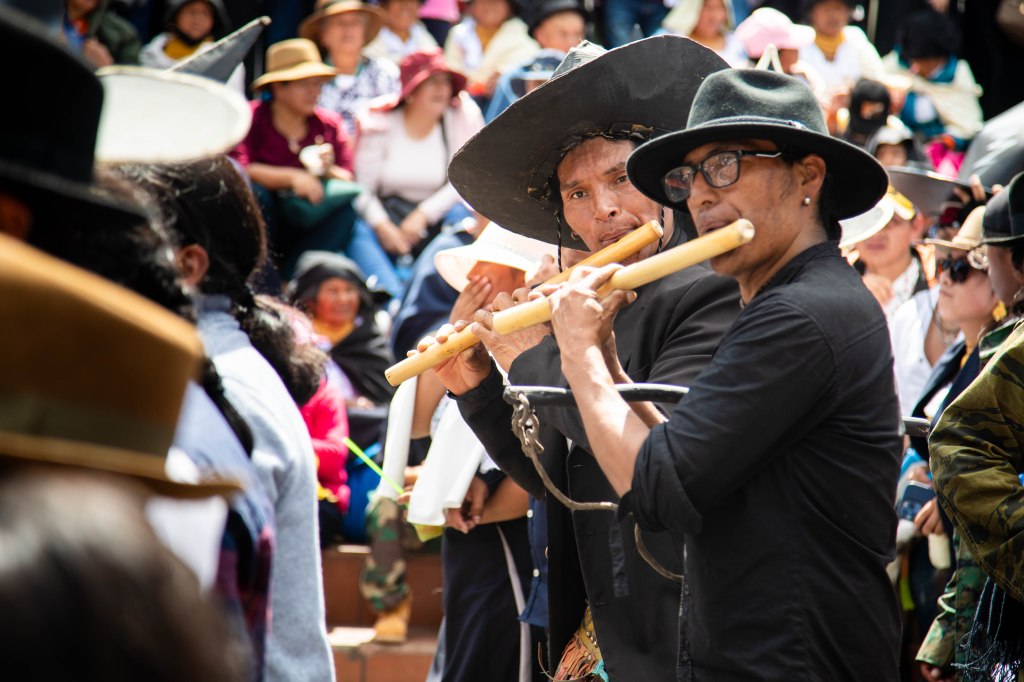
Seemingly unique to Cotacachi, the tushuks wear exaggerated black sombreros that emulate the hats worn by men working in the fields. The large brims shade the tushuk while the tall pyramidal tops supposedly point upwards towards Inti – the sun. Similarly unique to the Cotacachi celebration, many tushuks also sport camouflage jackets and other military apparel.
The takiks lead the procession and the tushuks follow behind performing a stomping dance to the beat of the music. As the procession reaches the square, the group will stop at each corner of the square with the takiks taking up their position in the middle of the corner. All of the tushuks quickly fall in line and begin to dance circularly around the tusuks – mimicking the circular path of the sun in the sky.
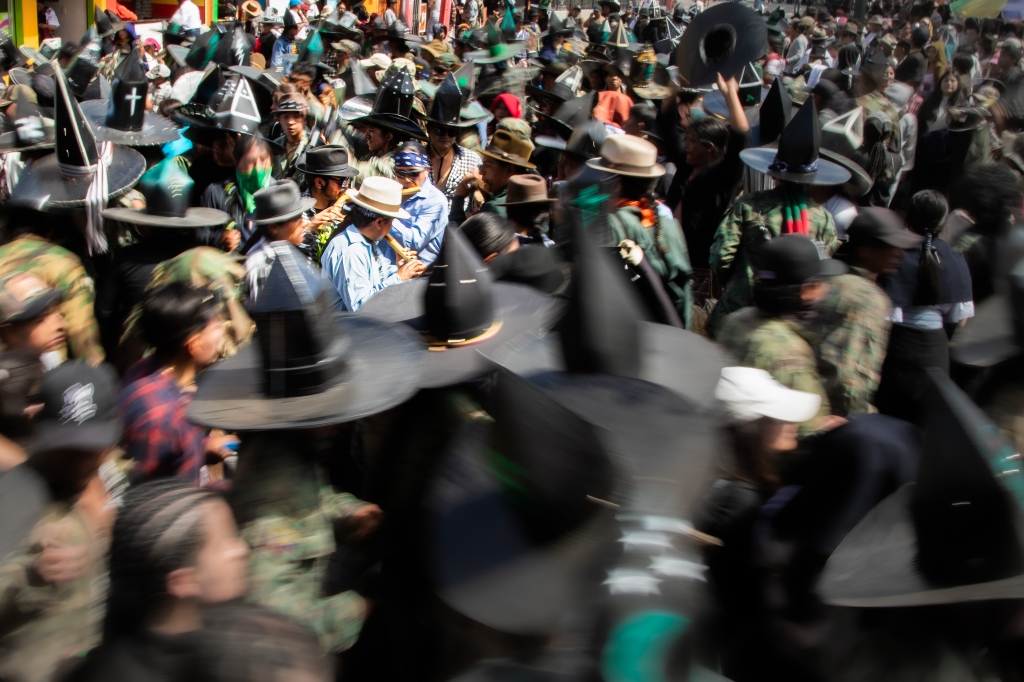
This rotation continues until the community leaders give the signal that it’s time to move on. At this point, the procession moves on and repeats at each of the four corners of the square. After the community has danced in all four corners, they move out of the square to make space for the next community.
As is seemingly the norm for large gatherings of men worldwide, alcohol flows freely in Cotacachi’s Inti Raymi and is often drunk out of canteens made from goat legs. The tushuks tend to get progressively more drunk throughout the day and it’s impressive to see how the community elders strategically distract and redirect the more rowdy contingents of their people to keep the peace and keep the procession moving as best they can.
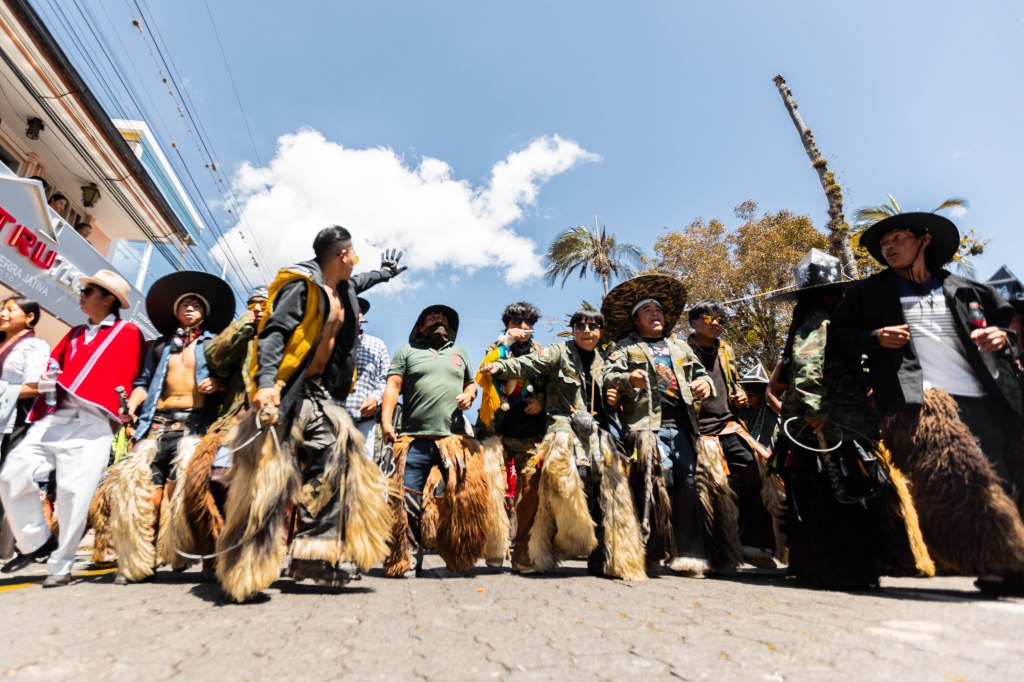
But with the anti-colonialist undertows of this celebration often redirected towards the current government, there is a large and well-equipped police presence surrounding Cotacachi’s central square. They tend to stay out of the celebration unless individual celebrants get too rowdy that it begins to affect or endanger other celebrants or bystanders. The biggest contribution of this police presence is to separate dancing communities when fights break out or grievances, old or new, are brought to the surface.
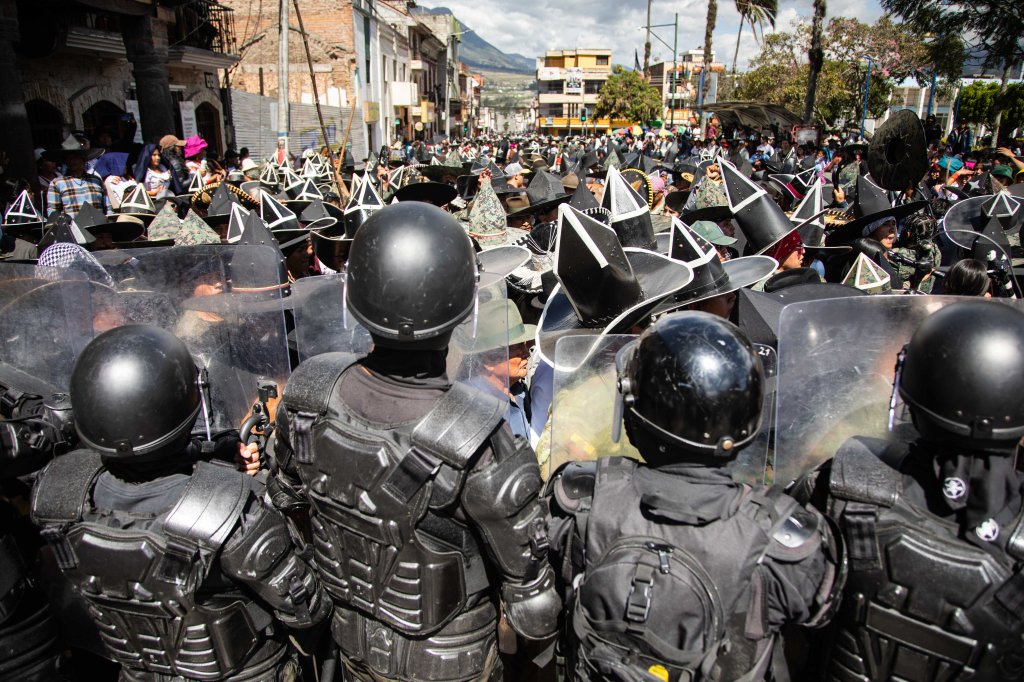
Overall, Inti Raymi in Cotacachi seems to be a well-blended mix of cultures and symbols. On a foundational level, it is indeed a celebration of the sun and earth, but more than anything else it seems to be a display of indigenous pride. Pride that although laws had and have been passed against them, their celebrations had been outlawed, and their customs looked down upon by civil society “Kaypimi kanchik.” They are still here.
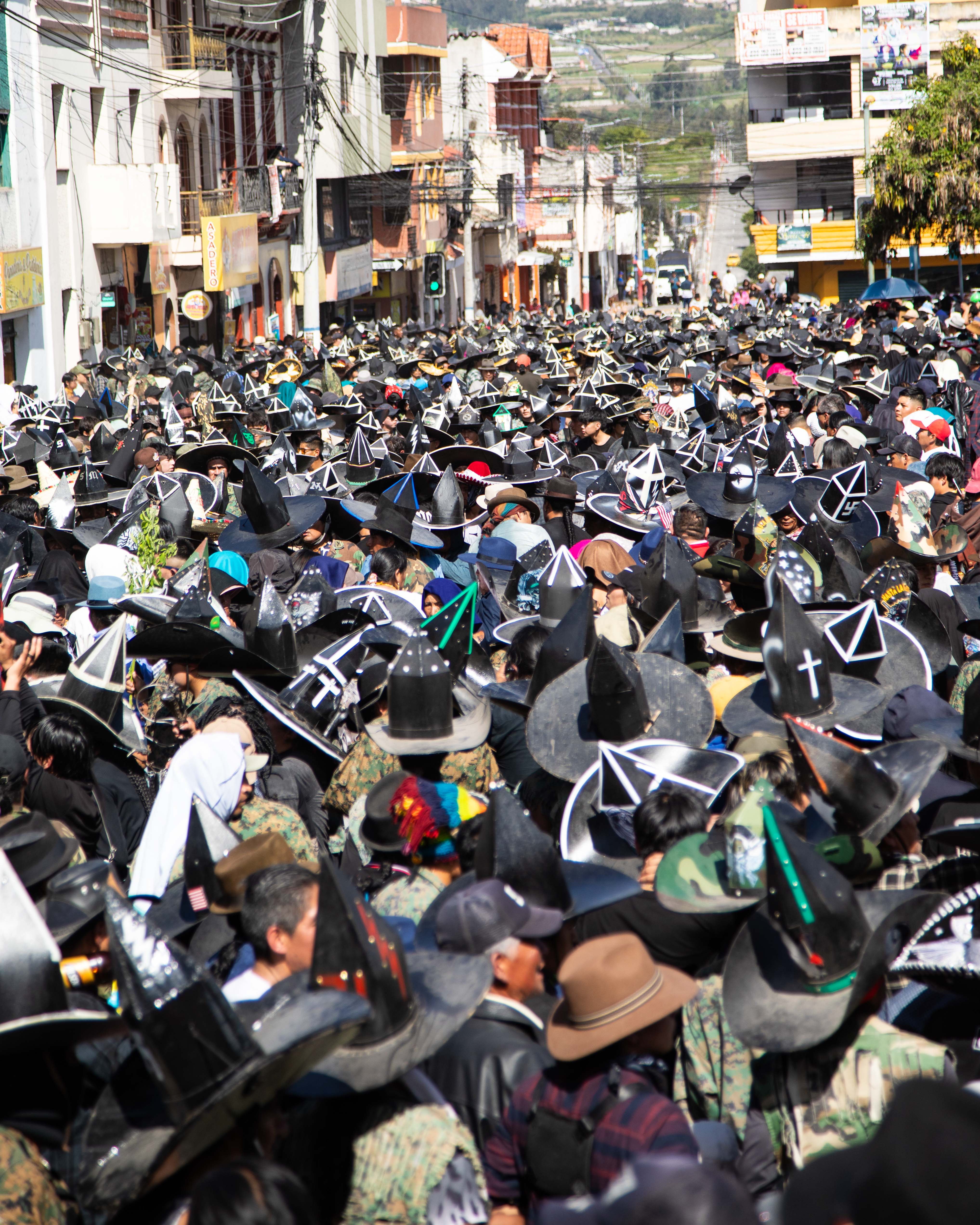
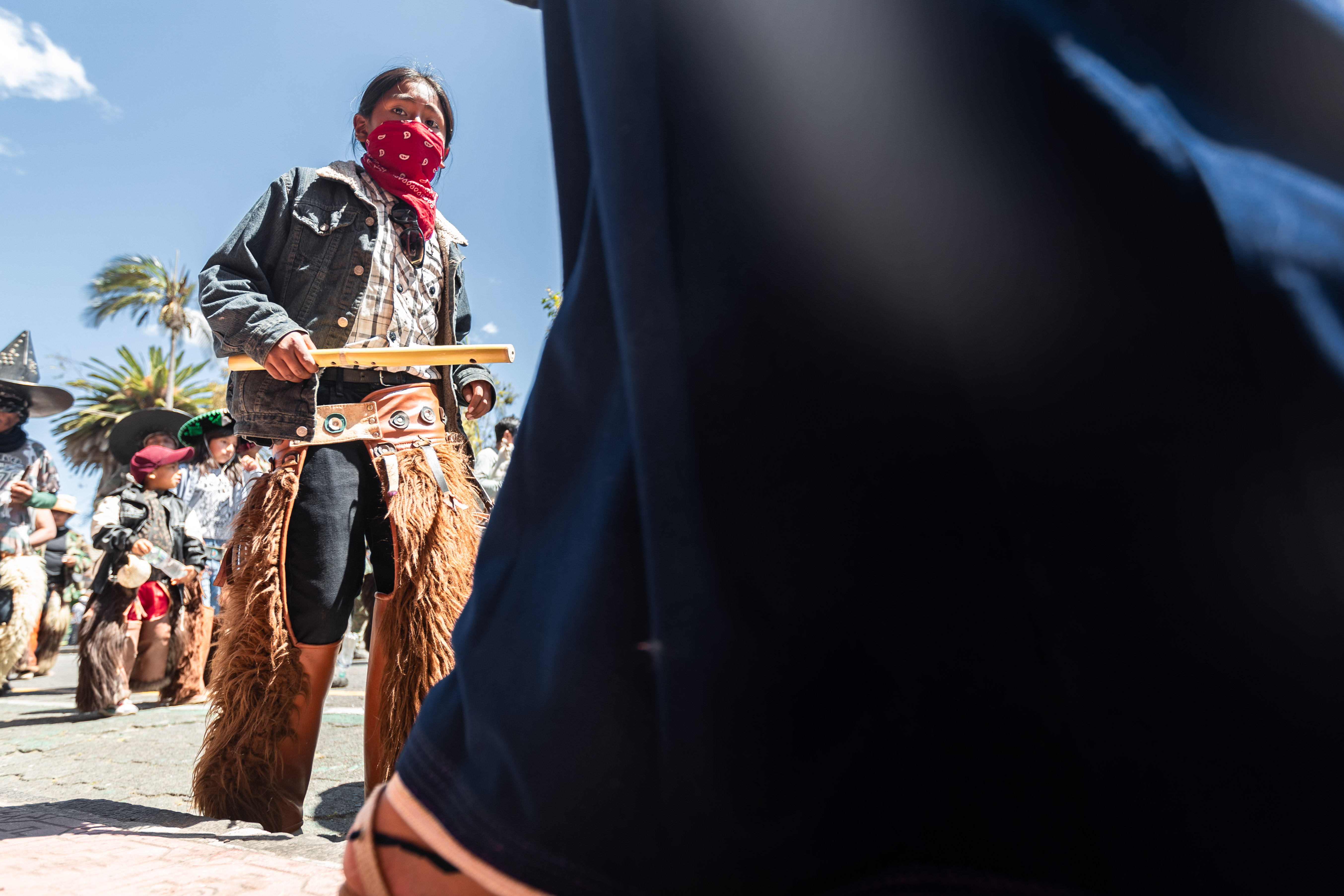
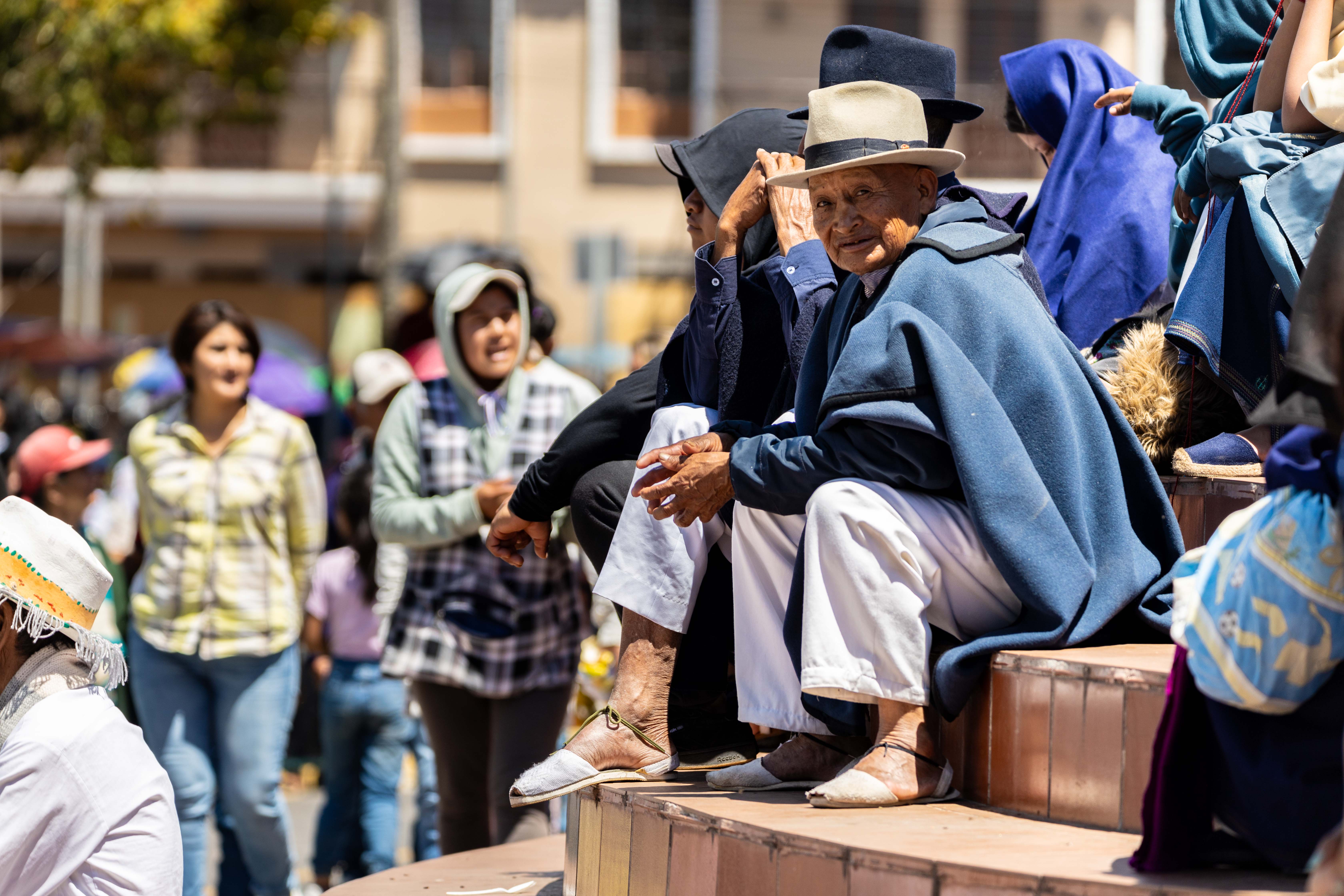
References
- “The Wonders of Peru’s Inti Raymi Festival: A Traveller’s Guide”. Cachi Life | Peru Tours | Peru Travel Experts. 2020-07-24. Retrieved 2020-07-28.
- https://www.eltelegrafo.com.ec/noticias/regional-norte/1/el-zapateo-energico-de-los-danzantes-alegra-el-inti-raymi . Retrieved 2024-08-04.
- https://www.turismo.gob.ec/cotacachi-celebrara-con-entusiasmo-la-fiesta-del-inti-raymi/ . Retrieved 2024-08-04.
- https://notyouraverageamerican.com/faces-inti-raymi/ . Retrieved 2024-08-04.